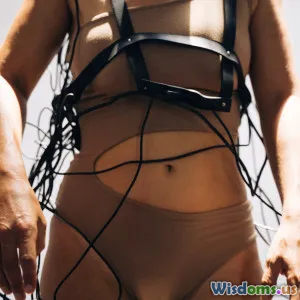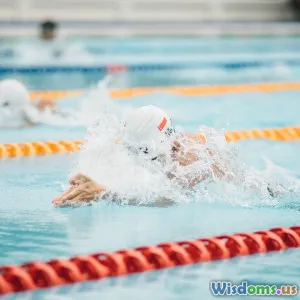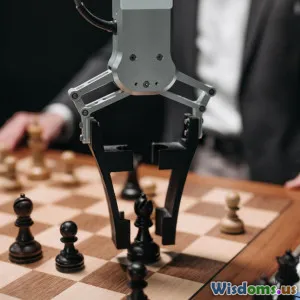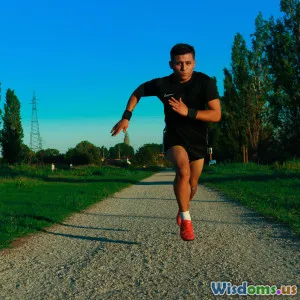
How to Use Wearable Tech for RealTime Performance Feedback in Soccer
8 min read Explore how wearable technology transforms soccer by providing real-time performance feedback to players and coaches for enhanced training and game-day decision-making. (0 Reviews)
How to Use Wearable Tech for Real-Time Performance Feedback in Soccer
Soccer, the world's most popular sport, is evolving rapidly, not just in tactics and player skills, but in how performance data is gathered and employed. Among the most revolutionary advances lies in wearable technology, which empowers coaches and players with real-time feedback, fostering smarter on-field decisions, enhancing training effectiveness, and pushing athletic potentials to new heights.
Introduction
Imagine a soccer coach who can monitor a player's stamina, speed, and positional data live during a game, and instantly adjust strategy. Imagine a player receiving instantaneous insights about their passing accuracy or explosive moves. This is no longer the domain of science fiction but a present-day reality thanks to wearable tech.
This article explores the fascinating world of wearable technology in soccer, focusing on how real-time performance feedback is enabled, the specific metrics tracked, and the tangible benefits for athletic development and tactical adjustments. Whether you're a player eager to improve, a coach seeking an edge, or a soccer enthusiast interested in technology's impact, this guide is your comprehensive resource.
The Rise of Wearable Tech in Soccer
Historically, performance analysis in soccer has relied on post-match video reviews and physiological testing, often separated from live context. Wearable technology has bridged this gap by integrating sensors directly into players' equipment or apparel, providing continuous data streams.
Examples of Popular Wearable Devices
- GPS vests: Embedded with GPS and accelerometers, these monitor distance covered, speed, and movement intensity.
- Heart rate monitors: Chest straps or optical sensors on the wrist track cardiovascular effort.
- Inertial measurement units (IMUs): These detect changes in acceleration, orientation, and angular velocity, crucial for analyzing dynamic movements such as cuts or sprints.
- Smart insoles: Measure pressure distribution and force within the foot to detect balance and landing forces.
Real-world adoption is widespread; for instance, clubs like Liverpool FC and Real Madrid utilize Catapult Sports GPS systems which provide granular data during training and matches.
Key Performance Metrics Captured by Wearables
Physical Output Metrics
- Distance Covered: Measures the total ground a player runs, with elite midfielders averaging 10-13 kilometers per game.
- High-Intensity Runs and Sprints: Tracks number and duration of explosive efforts, essential for evaluating stamina and recovery.
- Acceleration and Deceleration: Rapid starts and stops reveal player explosiveness and fatigue levels.
Physiological Metrics
- Heart Rate (HR) and Heart Rate Variability (HRV): Reflects effort levels and recovery status. HR spikes during high-pressure moments can signal stress or fatigue.
- Energy Expenditure: Calculates calories burned based on movement and HR data.
Technical and Biomechanical Insights
- Player Load: Combines data on movement intensity and impacts, quantifying the cumulative physical stress.
- Movement Patterns: Positioning data helps identify tactical adherence or deviations.
- Ball Interaction Sensors: Emerging tech enables tracking touch quality and force.
How Real-Time Feedback Transforms Performance
In-Match Tactical Adjustments
For coaches, having access to live data means tailoring strategies dynamically. For example, if wearable data indicates a winger's sprint count and speed are dropping significantly midway, a substitution or tactical shift can be made preemptively to maintain intensity.
Injury Prevention and Load Management
Wearables help detect fatigue-induced slowdowns or imbalances, acting as early warnings for injury risks. Monitoring biomechanical asymmetries or elevated player load can guide training moderation.
Player Self-Awareness and Development
Real-time feedback enables players to self-correct technical issues during drills. For instance, data on jump height or sprint power motivates focused improvements.
Case Study: AS Roma's Use of Wearables
AS Roma's sports science team implemented Catapult’s wearable tech to monitor players in real-time during Serie A matches. This data informed substitutions and positional changes, contributing to improved match outcomes and lower injury rates over the season.
Implementing Wearable Tech for Real-Time Feedback: A Step-by-Step Guide
1. Selection of Appropriate Devices
Choose wearables that balance accuracy, comfort, and data richness. For high-level teams, GPS vests augmented with heart rate and inertial sensors are ideal.
2. Establishing Data Infrastructure
Set up software platforms that aggregate sensor data, visualize metrics, and support live dashboards accessible to coaching staff during matches and training sessions.
3. Training Staff and Players
Educate users on interpreting metrics. For example, coaching staff should understand how to read workload indicators while players gain knowledge about recovery processes tied to HRV.
4. Designing Feedback Protocols
Decide on communication methods to relay insights without disrupting game focus—whether through earpieces, periodic huddles, or halftime debriefs.
5. Continuous Monitoring and Evaluation
Regularly assess the impact of wearable tech on performance and injury rates, refining technology use and feedback methods based on outcomes and evolving sports science research.
Challenges and Ethical Considerations
While wearable technology offers substantial benefits, pitfalls exist:
- Data Privacy: With detailed biometric information collected, safeguarding player data against misuse is paramount.
- Technology Integration: Ensuring wearables do not impede performance or comfort is critical, as is avoiding data overload which may confuse decision-makers.
- Cost and Accessibility: High-end devices can be expensive, potentially limiting use to professional clubs; expanding accessibility remains a challenge.
The Future Landscape
Emerging technologies like AI-driven analytics, machine learning models predicting injury risks, and augmented reality interfaces delivering feedback directly to players hint at a promising future where wearable tech becomes even more integral.
Furthermore, democratization through affordable devices may enable grassroots and youth soccer programs to harness real-time data for talent development.
Conclusion
Wearable technology has reshaped soccer by enabling unprecedented real-time feedback that coaches and players use to optimize performance on multiple fronts. From tracking physical exertion and tactical positioning to guideline injury prevention, the data-rich insights transform training methodologies and match-day strategies.
To fully capitalize on this revolution, embracing compatible devices, establishing robust data systems, and fostering a culture of informed interpretation are essential steps. As technology continues evolving, wearable tech will unquestionably be a staple for competitive success and player longevity in soccer.
Embracing wearable technology today is not just about measuring performance; it is about unlocking potential and shaping the future leaders of the beautiful game.
Rate the Post
User Reviews
Popular Posts

















